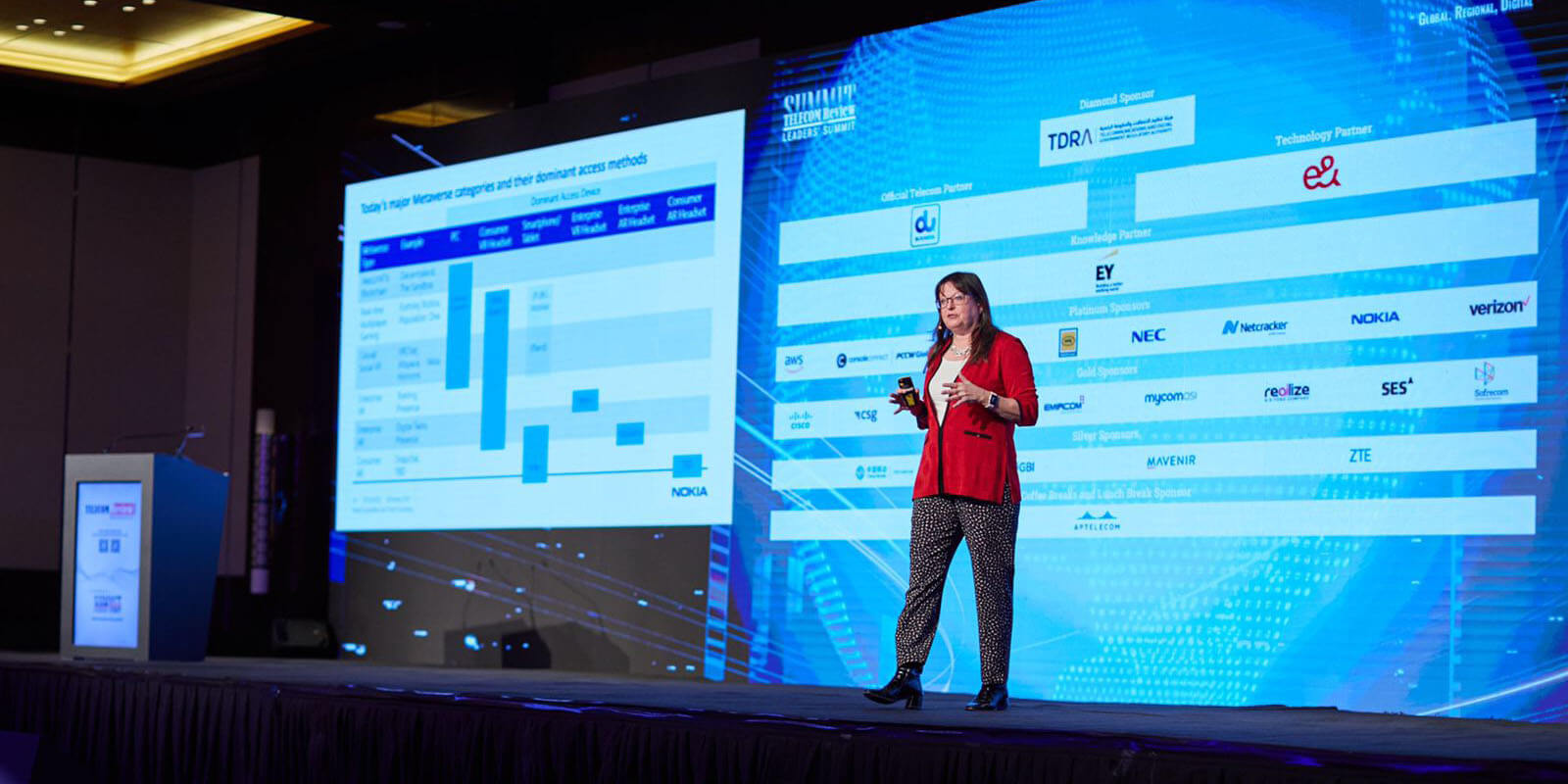Nokia’s Head of Ecosystem and Trend Scouting, Leslie Shannon, shed light on one of the hottest tech trends of today — metaverse — and how 5G works alongside it.
One of the interesting topics tackled during the 16th edition of the Telecom Review Leaders’ Summit is the metaverse and how it aims to bring new operator business opportunities, targeting both enterprises and consumers.
One Metaverse, Many Flavors
Shannon presented four metaverse categories that are believed to have merged over time. These are the blockchain/Web 3 metaverse that focuses on ownership; the gaming metaverse that focuses on competition and play; and the social and enterprise metaverses that focus on presence.
“The gaming metaverse is training today's children to be digital beings,” noted Shannon.
Metaverse Connectivity Types
Sharing the connectivity view of the metaverse, the Nokia executive touched upon virtual reality headsets, which have two main users: enterprises and consumers. For these two, the dominant access methods vary.
For enterprises, fiber and fixed wireless access (Wi-Fi) are utilized in combination with private wireless networks enabled by 5G. On the other hand, consumers maximize extended reality (XR) with tomorrow’s mobile.
Shannon explained that since 5G is mainly used outdoors while VR headsets are used indoors, the connectivity function for these headsets would rely on fixed networks. “All virtual reality handsets are allergic to sunlight…there are no native 5G-enabled VR headsets, and there never will be.”
Yet, new operator business opportunities are brought about by this technology, with cellular being more crucial for enterprises. This is mainly because of the scalability, security and reliability of 5G in private networks. From the consumer side, the mobility aspect of 5G will be beneficial.
As per Shannon’s prediction, by 2030, we will be shifting from smartphones to augmented-reality glasses.
New Technology Brings Enhanced Digital Experience
Having her own definition of metaverse, Shannon clearly said that this is a “partly or fully digital experience [that] brings together people, places and/or information in real-time in a way that transcends what is possible in the physical world alone in order to solve a problem.”
An example of this is Google’s AR glasses with speech-to-text, wherein tech erases many barriers that prevent easy communication.
“The big potential is the shift from looking at smartphones to integrating more with the physical world in real time,” she added. “New technology can't just be cool; it has to solve a problem.”










